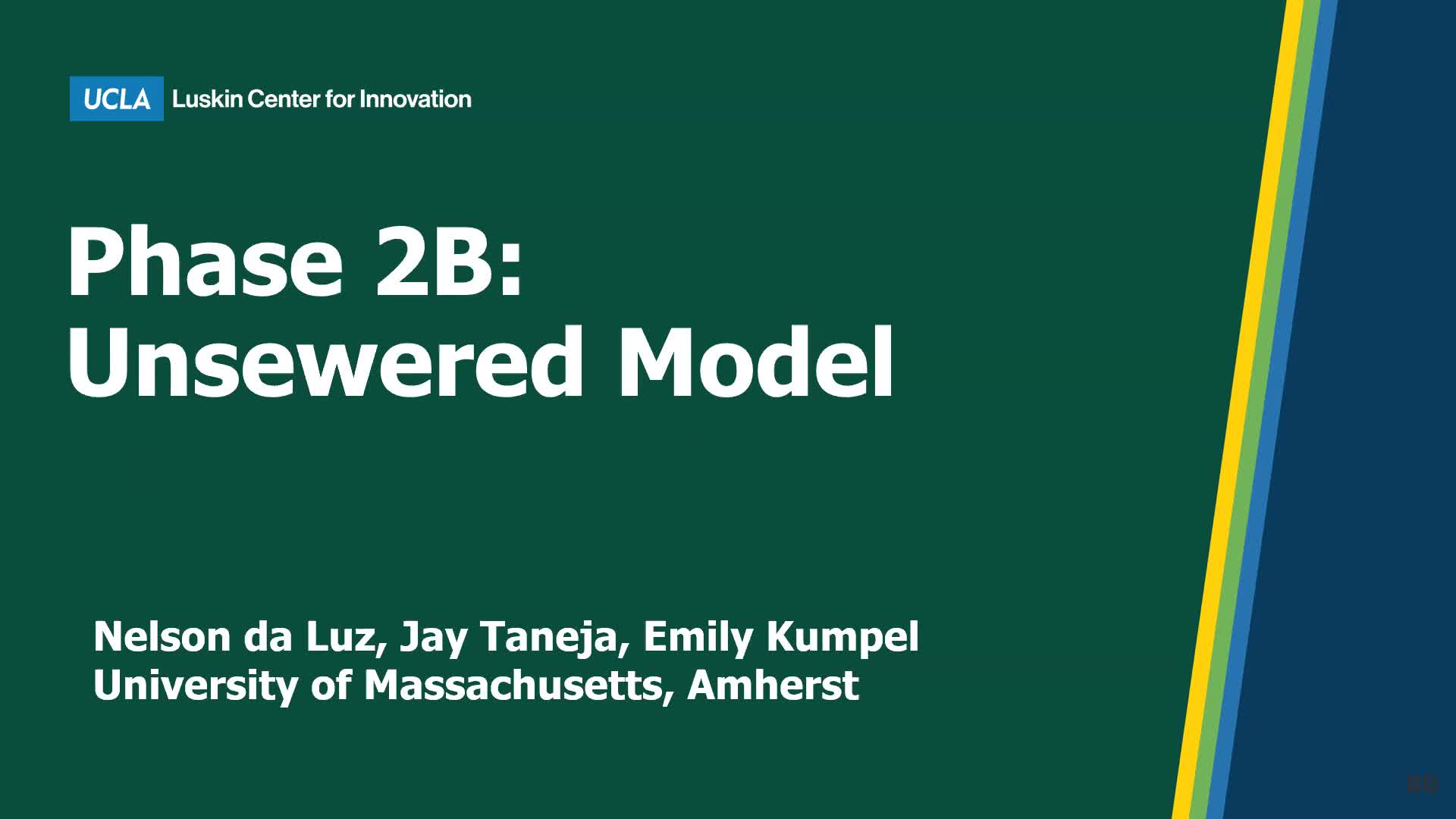UMass Develops Machine Learning Model for Wastewater Systems in Unsewered California Areas
July 28, 2025 | State Water Resources Control Board, Boards and Commissions, Executive, California
This article was created by AI summarizing key points discussed. AI makes mistakes, so for full details and context, please refer to the video of the full meeting. Please report any errors so we can fix them. Report an error »

The Wastewater Needs Assessment (WWNA) Advisory Group meeting on July 25, 2025, highlighted a groundbreaking model developed by UMass to address the challenges faced by unsewered areas in California. This innovative approach aims to fill critical data gaps regarding on-site wastewater treatment systems, which many households in the state rely on.
During the meeting, experts emphasized the lack of comprehensive data on these systems, noting that the State Water Board does not currently possess a complete database akin to the aquifer risk map. The UMass model is designed to provide valuable insights into the sanitation infrastructure needs of various parcels of land across California, using advanced machine learning techniques.
The model operates in two stages: first, it identifies whether a parcel requires sanitation infrastructure, and second, it categorizes the type of system in place—either a sewer connection or an on-site system like a septic tank. This classification is based on a variety of features, including proximity to wastewater treatment facilities and demographic data from the U.S. Census.
Importantly, the model does not guarantee 100% accuracy but offers good approximations based on available data. It also respects privacy concerns by not disclosing parcel-level information publicly. The model's predictions are supported by a confidence value, indicating the certainty of its classifications.
Initial results from the model show promising accuracy rates, ranging from 65% to 95% across different counties, with an overall accuracy of around 94%. This high level of performance suggests that the model can effectively inform future decisions regarding wastewater management and infrastructure development in California.
As the state continues to gather more comprehensive data, the UMass model could become an essential tool for addressing the sanitation needs of unsewered areas, ultimately improving public health and environmental outcomes across California.
During the meeting, experts emphasized the lack of comprehensive data on these systems, noting that the State Water Board does not currently possess a complete database akin to the aquifer risk map. The UMass model is designed to provide valuable insights into the sanitation infrastructure needs of various parcels of land across California, using advanced machine learning techniques.
The model operates in two stages: first, it identifies whether a parcel requires sanitation infrastructure, and second, it categorizes the type of system in place—either a sewer connection or an on-site system like a septic tank. This classification is based on a variety of features, including proximity to wastewater treatment facilities and demographic data from the U.S. Census.
Importantly, the model does not guarantee 100% accuracy but offers good approximations based on available data. It also respects privacy concerns by not disclosing parcel-level information publicly. The model's predictions are supported by a confidence value, indicating the certainty of its classifications.
Initial results from the model show promising accuracy rates, ranging from 65% to 95% across different counties, with an overall accuracy of around 94%. This high level of performance suggests that the model can effectively inform future decisions regarding wastewater management and infrastructure development in California.
As the state continues to gather more comprehensive data, the UMass model could become an essential tool for addressing the sanitation needs of unsewered areas, ultimately improving public health and environmental outcomes across California.
View full meeting
This article is based on a recent meeting—watch the full video and explore the complete transcript for deeper insights into the discussion.
View full meeting
